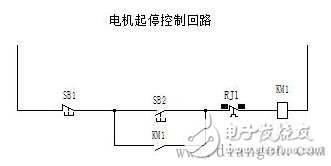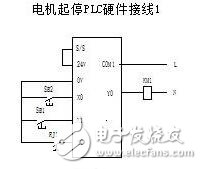Many small partners are confused about the difference between relay interlock control and PLC control, as they share several similarities. Today, we’ll break down the key differences and explore how these two systems operate.
If you compare a relay-based interlock control circuit with a PLC-based one, you'll notice that they function in fundamentally different ways.
Figure 1 illustrates a traditional relay interlock control system. In this setup, if there are multiple control loops, pressing any start or stop button will immediately trigger the corresponding contactor to either close or open. For simplicity, we're ignoring the slight delay caused by the contactor's operation. In essence, this system operates in parallel—each input is processed instantly, similar to how a computer handles interrupts, where any input action is responded to immediately.

Now let’s look at a PLC control system, as shown in Figure 2. This system runs a program like Program 1. The process works step by step: it first reads the inputs, latches them, then scans the program from top to bottom and left to right, latches the output results, and finally updates the outputs. This is done in a sequential manner, controlled by a clock signal. So, the PLC continuously cycles through the process of input, processing, and output. While the scan speed is extremely fast, it's still sequential, and most users don’t perceive the delay. However, in some cases, such as high-speed counting, the PLC may not capture all input signals accurately unless it uses a specialized high-speed counter interface.

It's important to understand that while both systems have their own advantages, they operate in completely different ways. Not all input signals can be reliably captured by a standard PLC. For example, high-frequency signals like those from a high-speed counter require specific hardware interfaces. However, for regular control signals, such as start/stop buttons, a standard PLC is more than capable. Take the FX2 PLC, for instance. If the program is around 1K in size and the start button is from a brand like IDEC, even a very short press is detected and processed correctly. This shows that despite the serial nature of PLC processing, its fast CPU speeds ensure that normal control operations work seamlessly. Only in special cases, such as high-speed counting, do you need to use dedicated hardware or instructions. For everyday applications, the PLC is fully reliable and efficient.
The stadium LED screen is ideal for places of with huge crowd. Its high resolution picture and wide viewing angle ensure best quality pictures and videos to every corner of the stadium. Stable body protects the display from any damage, even high speed ball.
The LED Display is manufactured by using best quality material, purchased from most reputed vendors. The final products feature supreme quality and offers best outputs. High refresh rate and gray scale ensures the picture quality remains seamless.
The display features a wide viewing angle of 120° horizontal and 120° in vertical which reaches more viewers. The picture quality remains seamless in all direction and at a distance, presenting all viewers the same highly quality outputs. This makes it suitable for large gathering. -
Stadium LED Display,Football Led Display,Staduim Led Display,Outdoor Football Led Display
Guangzhou Chengwen Photoelectric Technology co.,ltd , https://www.cwleddisplay.com
